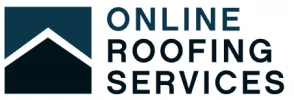Late updated: 03 Jan 2025 09:01
Written by: Oliver Bennett
Latest UK Practices In Roof Safety Management: Ensuring Compliance and Worker Safety
In recent years, the United Kingdom has taken significant strides in the field of roof safety management, greatly enhancing both building safety and compliance with legal regulations. Key amendments to British roofing standards, such as the revised BS 5534 for slating and tiling, demonstrate a concerted effort to improve safety protocols across the industry. This evolution means that contractors, designers, and specifiers must stay updated with the latest practices to ensure they are operating within the guidelines.

Safety in roof work is of paramount importance, particularly given the inherent risks associated with working at height. Recent updates, including the introduction of standards like BS 8612, stress the need to use reliable materials and methods, reflecting growing concerns about safety and security. As the Advisory Committee for Roofsafety continues to offer publications and resources, we see a stronger push towards accountability and education in this area.
Understanding the latest safety practices is not just about compliance; it's about ensuring peace of mind for everyone involved in the construction process. With continuous input from key organisations and regulatory bodies, our industry can expect to see ongoing improvements. Let's dive deeper into these progressive measures and how they shape operational excellence in roof work today.
Key Takeaways
- British standards for roofing have seen important updates.
- Safety is enhanced by improved materials and methods.
- Staying informed is crucial for compliance and safety.
Evolving Practices in Roof Safety Management

The landscape of roof safety management has undergone significant changes. Key areas of focus include advancements in regulatory frameworks, materials, and strategies to prevent falls and ensure worker safety.
Understanding the Work at Height Regulations 2005
The Work at Height Regulations 2005 form the backbone of safety management in roofing within the UK. These regulations require employers in the construction industry to conduct thorough risk assessments before beginning any roof work.
They mandate measures such as the use of personal protective equipment (PPE), safety nets, and guard rails to prevent falls from height. Employers must ensure that all roofers and workers involved in maintenance or construction activities are competent and receive continuous training.
Inspection and maintenance of equipment used for working at height are critical to compliance. These regulations have evolved to include stricter enforcement and greater emphasis on proactive measures to minimise risks.
Innovative Materials and Equipment
Innovation in materials and equipment has dramatically improved roof safety. Modern roofing materials, designed for non-fragility, reduce the risk of falls through the roof. Glass-reinforced plastic and heavy-duty polymers offer durability and safety by meeting high safety standards.
Advanced equipment such as scaffolds and mobile platforms provide safer alternatives to traditional ladders. Smart technology in PPE enhances protection with features like sensors that alert workers to potential hazards.
Moreover, roofing systems now integrate fall arrest kits and secure anchoring points. These innovations ensure that roofers can carry out their tasks with reduced risk. As these advancements continue, industry standards evolve, promoting continual improvement in safety performance.
Fall Prevention and Protection Strategies
Strategies for fall prevention and protection are crucial in roof safety management. Employing asafety-first approach, we ensure our risk assessments are up-to-date and comprehensive. This involves identifying potential hazards, especially around roof edges, where falls are most likely.
We prioritise solutions like guard rails and safety nets as primary prevention methods. For additional protection, fall arrest systems provide a failsafe by stopping a fall in progress.
These strategies require regular review and training sessions to keep personnel informed of the safest practices. Adopting a culture of safety ensures that both new and experienced roofers are equipped to deal with the challenges of working at heights.
Operational Excellence in Roof Work
Achieving excellence in roof work encompasses careful planning, thorough training, and robust emergency procedures. Ensuring safety and efficiency in these areas is essential for reducing risks and enhancing worker performance.
Planning and Execution of Safe Roof Work
Effective planning begins with a comprehensive risk assessment. Designers and specifiers should prioritise solutions for safe access and edge protection, addressing both repair and installation phases.
A detailed method statement outlines the entire procedure, accommodating individual activities like maintenance work or new installations. This document informs all parties, including building owners and clients, of the necessary precautions.
Coordination with surveyors is key. They help determine the most efficient and safe systems of work, ensuring compliance with legal obligations. Continuous communication among all stakeholders enhances overall safety and operational flow.
Training and Responsibility for Safe Operation
Training is a cornerstone of safety for all roof work professionals, from the self-employed to large construction teams. We emphasise ongoing professional development to ensure everyone understands current best practices and regulations in health and safety.
Workers should be well-versed in their responsibilities, informed through sessions led by experienced trainers. Building owners and clients benefit from being aware of the responsibilities and roles played by contractors during projects.
The use of advisory committees, like the Advisory Committee for Roof Safety, enriches our training programmes with up-to-date insights. Knowledge of both legal compliance and practical safety measures is imparted to ensure all participants act confidently and safely.
Emergency Procedures and Reporting
Establishing clear emergency procedures is crucial for responding to incidents effectively. Plans should cover first aid measures, the use of emergency contacts, and procedures for evacuations if necessary.
Incident reporting is not just about documenting serious injuries but involves a system that helps identify recurring issues for future prevention. Different roles from workers to site managers need to be adept at using these procedures to initiate prompt action.
Regular drills and checks ensure everyone is familiar with the emergency protocols. Building a culture of safety goes beyond training; it requires a commitment to immediate and accurate reporting, underpinned by a robust procedural framework.
Frequently Asked Questions

In this section, we address key concerns surrounding roof safety management, especially focusing on current UK practices. Our responses offer precise guidance on safety procedures, legal requirements, and effective risk management strategies.
What are the latest safety procedures for conducting roof work in the UK?
Latest safety procedures include comprehensive training for roofers, secure access to roof areas, and the mandatory use of safety gear. A valid CSCS card is required for proof of training. Proper insurance coverage also plays a critical role in adhering to safety regulations.
What essentials should be included in a roofing work safety checklist?
A roofing safety checklist needs to cover hazard identification, safety gear checks, and emergency protocols. It should also include inspecting tools and equipment, verifying the structural integrity of scaffolding, and ensuring communication plans are well established.
How should a risk assessment and method statement for roofing work be structured?
A risk assessment must identify potential hazards, assess their impact, and determine control measures. The method statement should detail the work process, safety measures to be implemented, and roles of personnel involved. Clear documentation ensures compliance and safety awareness.
What are the legal requirements for scaffolding when working on roofs in the UK?
Scaffolding must meet specific legal requirements, including proper design, inspection by a competent person, and erection by qualified workers. Compliance with the Work at Height Regulations ensures it is safely installed to prevent falls and injuries during roof work.
How can a roofing health and safety policy template be tailored to meet current regulations?
Tailoring a policy template involves updating it according to current legislation and best practices. We should incorporate the latest health and safety standards, specific risk management strategies, and ongoing training programs to ensure full compliance with UK regulations.
What guidelines must be adhered to for managing safety risks during construction roofing works?
Guidelines emphasise using protective equipment, regular safety audits, and proper training of personnel. Risk assessments and method statements must be up-to-date, and all workers should be clear about emergency procedures. Adhering to these guidelines helps maintain a safe working environment.
